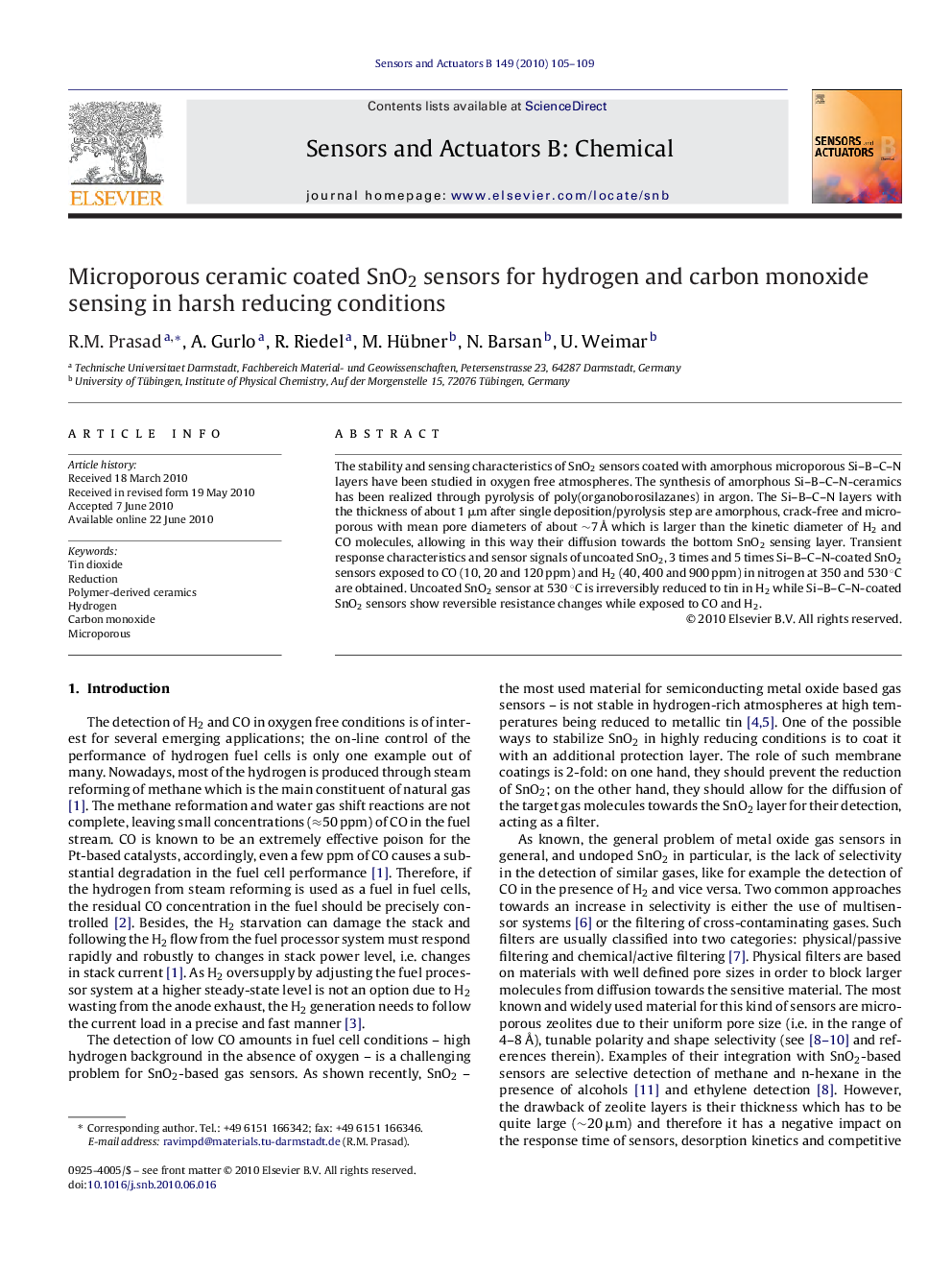| Article ID | Journal | Published Year | Pages | File Type |
|---|---|---|---|---|
| 742930 | Sensors and Actuators B: Chemical | 2010 | 5 Pages |
The stability and sensing characteristics of SnO2 sensors coated with amorphous microporous Si–B–C–N layers have been studied in oxygen free atmospheres. The synthesis of amorphous Si–B–C–N-ceramics has been realized through pyrolysis of poly(organoborosilazanes) in argon. The Si–B–C–N layers with the thickness of about 1 μm after single deposition/pyrolysis step are amorphous, crack-free and microporous with mean pore diameters of about ∼7 Å which is larger than the kinetic diameter of H2 and CO molecules, allowing in this way their diffusion towards the bottom SnO2 sensing layer. Transient response characteristics and sensor signals of uncoated SnO2, 3 times and 5 times Si–B–C–N-coated SnO2 sensors exposed to CO (10, 20 and 120 ppm) and H2 (40, 400 and 900 ppm) in nitrogen at 350 and 530 °C are obtained. Uncoated SnO2 sensor at 530 °C is irreversibly reduced to tin in H2 while Si–B–C–N-coated SnO2 sensors show reversible resistance changes while exposed to CO and H2.
